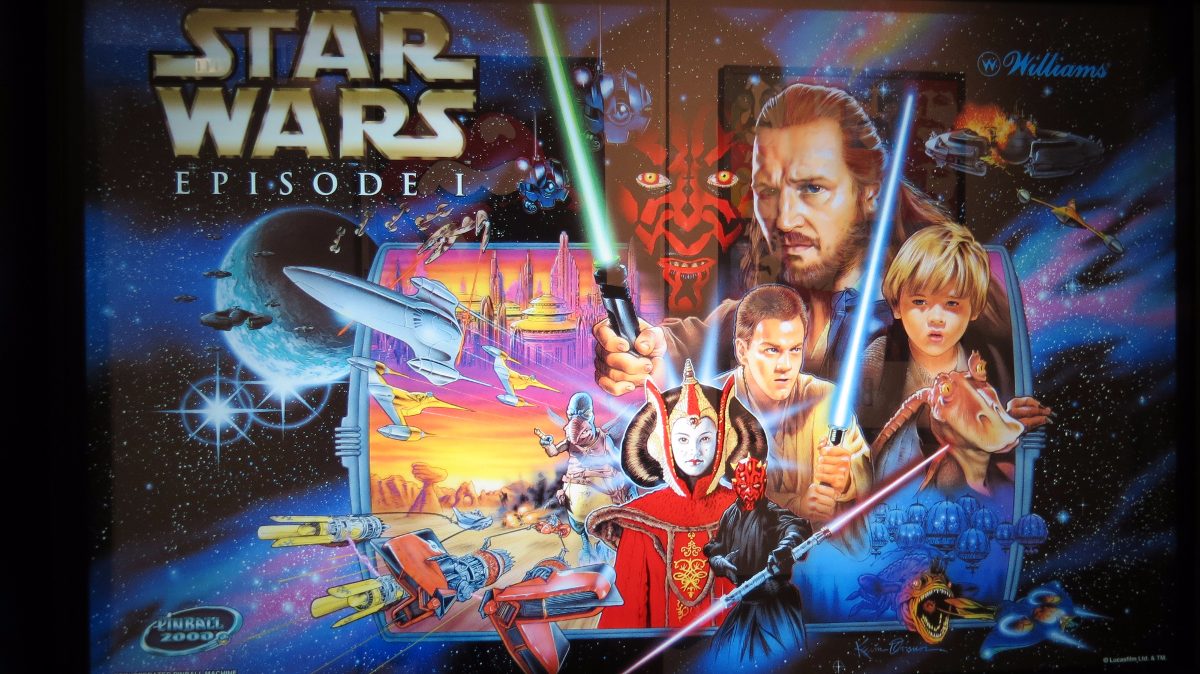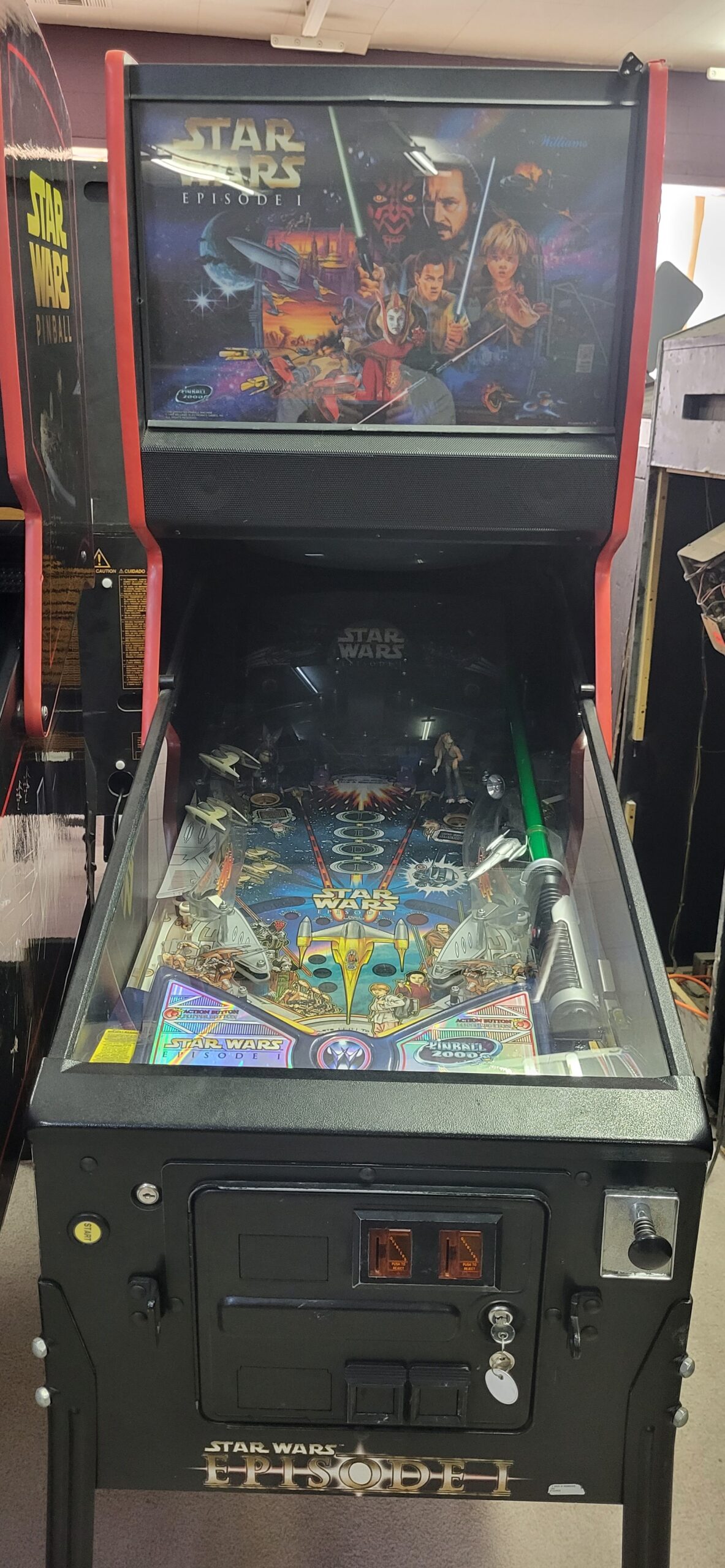
Space Panic
Pinball / Williams 1999
“Star Wars: Episode I” is a pinball machine produced by Williams Electronics as part of their Pinball 2000 series. Released in 1999, the game is themed around the film “Star Wars: Episode I – The Phantom Menace.” It combines traditional pinball mechanics with interactive video display technology, offering players a dynamic experience that integrates classic gameplay with modern digital elements. The game is known for its distinctive cabinet design and interactive features, such as a reflective monitor that projects video sequences onto the playfield.
The development of “Star Wars: Episode I” began in the late 1990s, during a period of innovation in the pinball industry. Williams sought to revitalize interest in pinball by integrating video game elements with their traditional machines. This led to the creation of the Pinball 2000 platform, which featured an interactive video display reflected onto the playfield. “Star Wars: Episode I” was the second and final game released under this platform, following the success of “Revenge from Mars.” The development team worked closely with Lucasfilm to incorporate authentic elements from the movie, ensuring that the game’s visuals and sound effects were true to the Star Wars universe.
Upon release, “Star Wars: Episode I” received mixed reviews from the pinball community and critics. While some praised the innovative use of video integration and the immersive Star Wars theme, others felt that the gameplay was less compelling compared to traditional pinball machines. Despite these mixed reviews, the game has gained a cult following among collectors and enthusiasts, who appreciate its unique place in pinball history as part of the Pinball 2000 experiment.
“Star Wars: Episode I” was released exclusively as a pinball machine and did not see variations in other formats. However, it is directly related to “Revenge from Mars,” the first game in the Pinball 2000 series, as both share the same platform and technological innovations. Additionally, several other Star Wars-themed pinball machines exist, produced by different manufacturers over the years, contributing to the broader collection of Star Wars pinball experiences.
“Star Wars: Episode I” is considered a rare and sought-after machine among pinball collectors. Approximately 3,525 units were produced, making it less common than many other pinball machines from the same era. The game’s value varies depending on condition and completeness, with well-maintained units typically fetching higher prices. As of recent estimates, a fully functional and well-preserved “Star Wars: Episode I” machine can be valued between $3,000 and $6,000.
The “Star Wars: Episode I” pinball machine features a complex blend of mechanical and digital components, requiring specialized knowledge for repairs and maintenance. Key hardware specifications include:
Processor: Williams WPC-95 MPU
Display: Interactive video screen with reflection onto the playfield
Sound: Stereo sound system with authentic Star Wars effects
Lighting: Various incandescent and LED lights for playfield illumination
Mechanisms: Flippers, bumpers, ramps, and other traditional pinball mechanisms
Relevant Parts for Repairs:
CPU Board: Controls game logic and video integration.
Power Driver Board: Manages power distribution to various components.
Display Monitor: Projects video onto the playfield.
Flippers: Essential for gameplay, requiring regular maintenance.
Bumpers and Ramps: Key mechanical components prone to wear.
Plunger Assembly: Launches the ball into play.
Sound Board: Produces game sound effects and music.
Lighting Components: Bulbs and LEDs for playfield illumination.
Rubber Rings: Various sizes used throughout the playfield.
Transistors and Capacitors: Common electronic components that may need replacement.
Proper maintenance and availability of these parts are crucial for the continued operation and enjoyment of the “Star Wars: Episode I” pinball machine.


